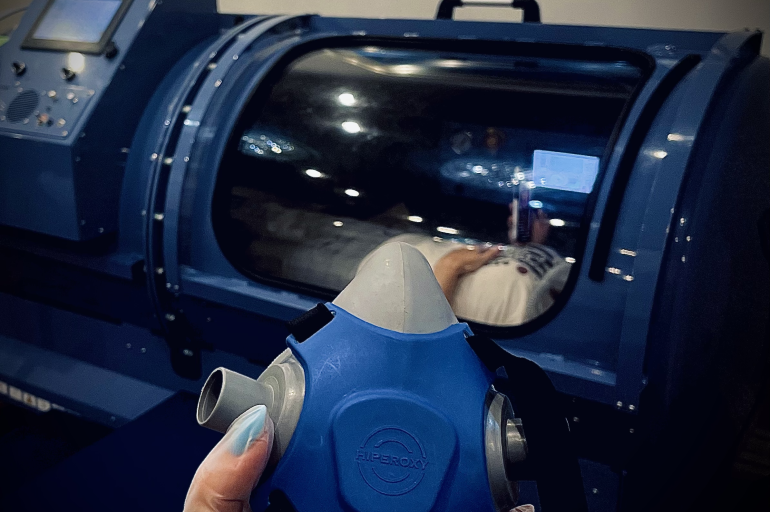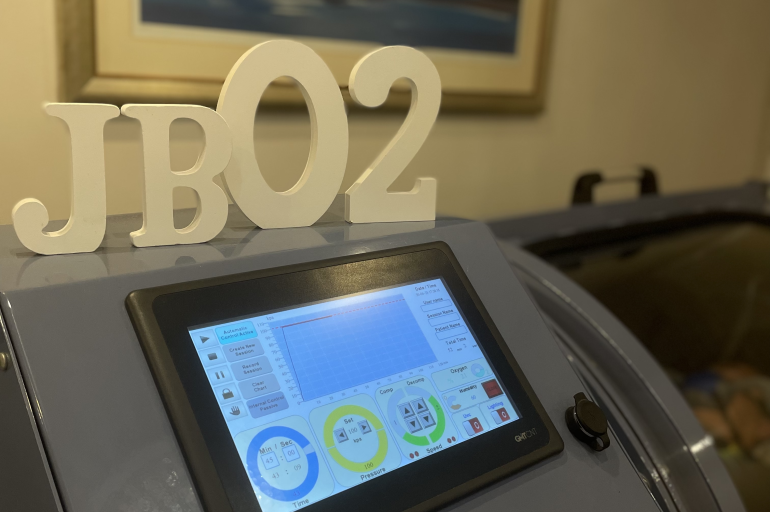
Living with a long-term condition can be isolating, especially when the symptoms are invisible and difficult to articulate. For our new client, a retired GP in her sixties, her journey with Long Covid brought a host of complex symptoms including chronic fatigue, dysautonomia, cognitive issues and Mast Cell Activation Syndrome (MCAS). With a strong medical background herself and through doing lots of research she understood the complexities of her health condition, but she was looking for a new path forward.
She was advised that there is now a growing body of research showing the beneficial effects of hyperbaric oxygen therapy in Long COVID. The multiple studies demonstrate it can improve symptom profiles, including fatigue and pain. Hyperbaric oxygen therapy has also been shown to have beneficial effects at reducing chronic inflammation via the reduction of oxygen free radicals, and given her personal PSV O2 results suggested reduced oxygen delivery to the tissues, it was advised a course of HBOT may be beneficial.
We are privileged to be following her journey with Hyperbaric Oxygen Therapy (HBOT), and we’ll be sharing her progress here anonymously.
The Cautious Start
Given the complexity of her health condition, we began with a slow and careful approach. The goal is to work up to two sessions a week, a manageable frequency for her given her travel distance outside the region. Her first full session was a cautious step, administering 88% oxygen at 1.5 ATA for 45 minutes at pressure. Following this, she didn’t feel any major difference, but her husband noticed something promising: a slight but definite lift in her energy.
week, a manageable frequency for her given her travel distance outside the region. Her first full session was a cautious step, administering 88% oxygen at 1.5 ATA for 45 minutes at pressure. Following this, she didn’t feel any major difference, but her husband noticed something promising: a slight but definite lift in her energy.
The Breakthrough Session
For her second session, we incrementally increased the pressure to 1.75 ATA. The very next day, a remarkable shift occurred. She noticed a complete and positive change in her mood, feeling far more relaxed and genuinely happy. She looked and felt brighter. Because of this powerful positive response, we kept the pressure and protocol the same for her third session. The positive feeling continued, and her energy appeared elevated, confirming that we were on the right track.

The Science Corner: The Challenge of Oxidative Stress
Our slow and steady approach is based on a core scientific principle. While HBOT can powerfully support the body, administering too high a pressure or oxygen concentration too quickly can have a negative effect. This is because high levels of oxygen can, in theory, increase the production of reactive oxygen species (ROS) and contribute to what’s known as oxidative stress—an imbalance that can cause cellular damage.
However, the key is what happens next. Research shows that HBOT also “upregulates the production of antioxidant enzymes”, a process that has been termed “conditioning”. This allows the body to protect itself against the potential damage from ROS. By taking our time, we give the body a chance to build this natural defense mechanism, ensuring the therapy is as beneficial as possible.
Progress and Personalised Care
Our cautious approach continued for her fourth session. Due to some minor discomfort from MCAS, we only moved the pressure up to 1.8 ATA with a slower speed. This highlights our commitment to listening to our clients’ bodies and adapting the treatment to their needs. Her positive demeanor and elevated energy have continued to be the most noticeable benefits so far.
This is just the beginning of our client’s journey to get her health back. We’re excited to continue to follow her progress and witness the power of a safe and personalised approach to healing. Stay tuned for our next update!

